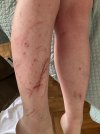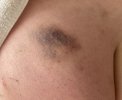- Time of past OR future Camino
- Camino Frances
SJPP to SdC, 2023
CF, 2024
One death attributed to a heart attack last week.
Two pelegrinos gored, one seriously.
One broken leg and many ending in Pamplona due to knee and leg and ankle injuries.
Is it possible to confirm these "facts" independently Ivar? Been quite the start, if true!
Moderators and more experienced Pelegrinos, is there any way to determine the number who drop off after registering at SJPP? I know that wouldn't account for all those that begin, but it would get us "in the ballpark"! Thank you!
Finally, the why. I would like to be able to lift those injured or killed in prayer, and be able to remind those coming that this is NOT a "Sunday stroll" for most!
Thanks!
Two pelegrinos gored, one seriously.
One broken leg and many ending in Pamplona due to knee and leg and ankle injuries.
Is it possible to confirm these "facts" independently Ivar? Been quite the start, if true!
Moderators and more experienced Pelegrinos, is there any way to determine the number who drop off after registering at SJPP? I know that wouldn't account for all those that begin, but it would get us "in the ballpark"! Thank you!
Finally, the why. I would like to be able to lift those injured or killed in prayer, and be able to remind those coming that this is NOT a "Sunday stroll" for most!
Thanks!



























